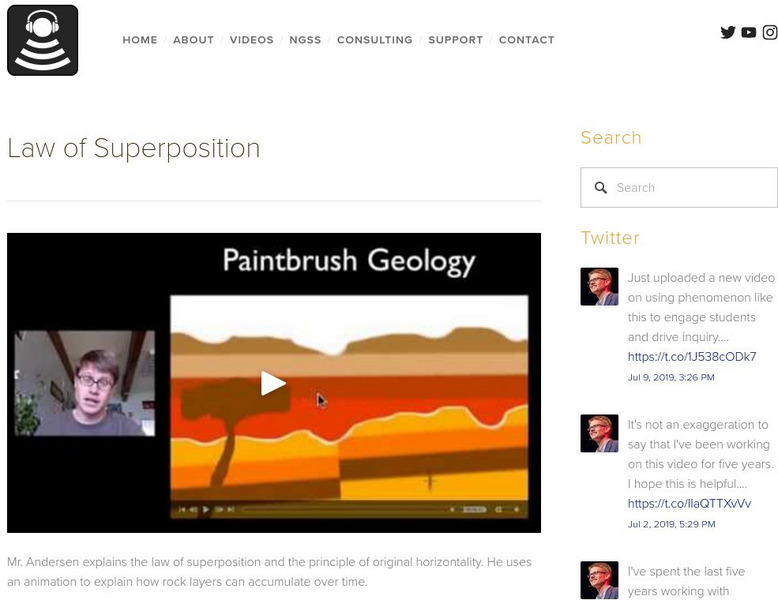Getty Images
Lake Powell Shoreline 1
Layers and crossbedding are clearly visible in the sandstone shore of Lake Powell, Utah.
Bozeman Science
Law of Superposition
Scholars learn how rock layers, shift, and move over time. The instructor shows viewers how to solve geologic problems to determine the order of rock layers from oldest to youngest through a drawing video and then actual...
MinuteEarth
The Deadliest Ice Age Ever
Will all species follow the trilobite down the road to extinction? Discover the changing conditions on ancient Earth that led to both population explosions and mass extinctions with a video presentation. The narrator shows examples...
SciShow
Great Minds: James Hutton, Founder of Geology
Don't get sedimental when you learn the history of geology. The video focuses on James Hutton who, in the 1700s, came up with a theory based on rock layers. Without using any modern dating tools, he was able to theorize the earth was...
Be Smart
How Does A Canyon Become Grand?
Ah, the Grand Canyon ... ain't it grand? The narrator of a video from PBS Digital Studios explains, in detail, how the Grand Canyon was formed over millions of years.
Be Smart
100,000,000 Years From Now
Holocene, Pleistocene, Pliocene, Miocene, Oligocene, Eocene, Paleocene ... wait, did I miss one? PBS Digital Studios explains how human impact on Earth has potentially brought about a new epoch in geologic history, the Anthropocene....
Bozeman Science
Bozeman Science: Law of Superposition
Mr. Andersen explains the law of superposition and the principle of original horizontality. He uses an animation to explain how rock layers can accumulate over time. [6:21]
Incorporated Research Institutions for Seismology
Iris: Stratigraphy: Geologic History of a Region in Cross Section
Rocks may be created in layers, but those layers do not always stay in the form or location where they were created. Find out about the forces that can change rock layers that help tell the story of the Earth in that location.







